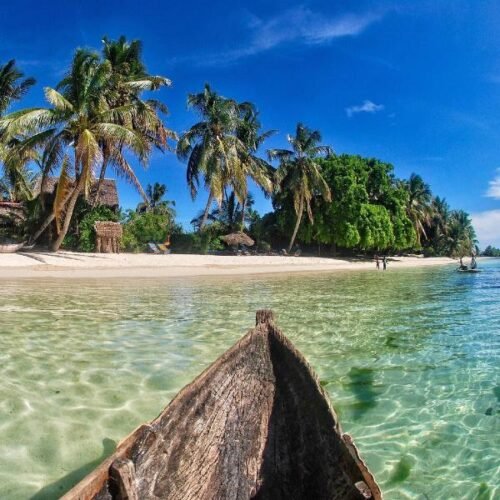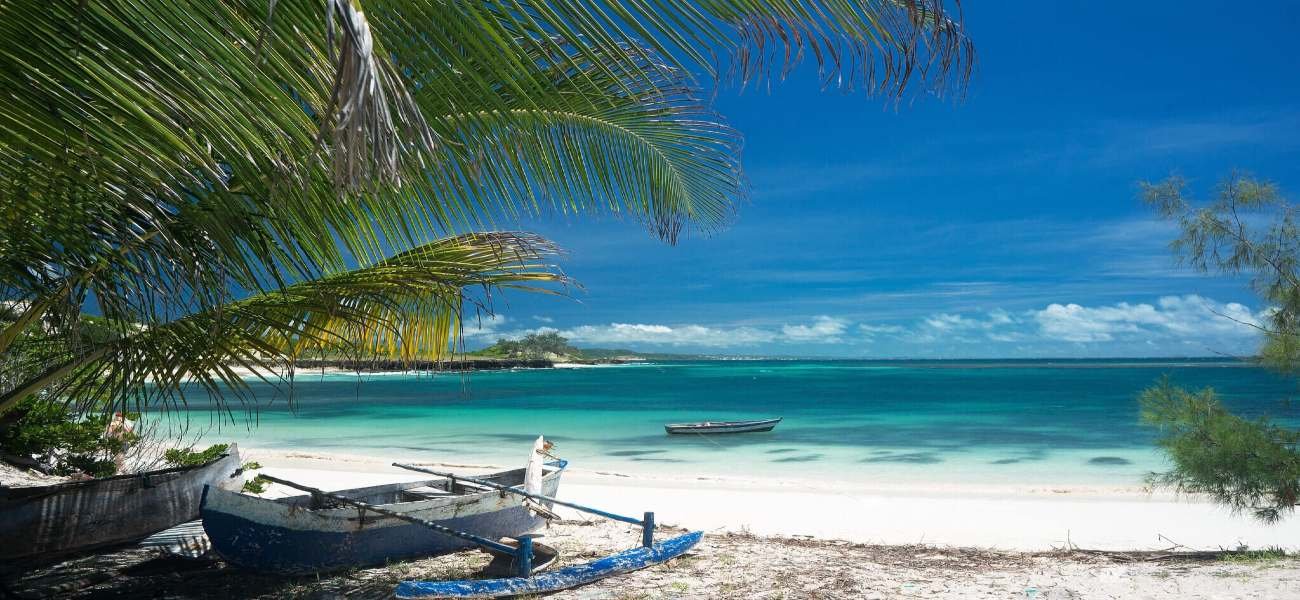Sainte Marie, also known as Nosy Boraha, lies just 30 kilometers off Madagascar’s east coast, running parallel to the mainland. This lush tropical island is a treasure trove of history, natural beauty, and local culture, offering visitors a truly immersive experience in one of Madagascar’s most enchanting destinations.
Overview of Sainte Marie (Nosy Boraha)
Often referred to as Madagascar’s most beautiful island, Sainte Marie is a haven of white-sand beaches, swaying coconut palms, and verdant tropical gardens. The island’s unique charm lies in its perfect blend of tranquility and adventure. While the island may see occasional rain showers, this has turned Sainte Marie into a flourishing paradise filled with cinnamon, clove, and orchid trees. Everywhere you look, banana, papaya, and mango trees thrive, painting the landscape in vibrant greens.


A Glimpse into History
Nosy Boraha, meaning “Island of Ibrahim” or “Island of Abraham,” is steeped in history. Named after an early Muslim or Jewish merchant, the island was discovered by Portuguese explorers in the early 1500s and originally christened Santa Maria. The French later adopted the name Sainte Marie, and it became a key location during Madagascar’s colonial era.
By the late 17th century, Sainte Marie was a bustling pirate haven. The island served as the headquarters for notorious buccaneers who prowled the Indian Ocean. Among the many stories from this era is that of Queen Bety, daughter of the Malagasy King Ratsimilaho. After marrying a French corporal in 1750, she received Sainte Marie as a dowry, which later facilitated France’s colonization of Madagascar.
Throughout the 19th century, the island played a strategic role during French and British military campaigns. It remained under French control from 1896 until Madagascar’s independence in 1960, and the remnants of its colonial past can still be seen today.
When to Visit Sainte Marie
The island’s tropical climate makes it a pleasant destination year-round. However, the best time to visit is during the dry season, from April to November, when temperatures are more comfortable and rainfall is less frequent. For whale enthusiasts, the humpback whale migration from June to September is a highlight. During this time, you can witness these majestic creatures breaching and playing in the warm waters surrounding Sainte Marie, a spectacle that draws visitors from around the world.
What to See and Do in Sainte Marie
Sainte Marie offers a wealth of activities and sights for travelers looking to immerse themselves in its natural beauty, rich culture, and maritime adventures.
-
Explore Ambodifotatra: As the island’s main town and port, Ambodifotatra is home to Madagascar’s oldest Catholic church, Notre Dame de l’Assomption, built in 1859. The church’s cast-iron altar, a gift from Empress Eugenie, is a highlight. Nearby, the Old Fort of Sainte-Marie provides a glimpse into the island’s colonial past and offers stunning views over the bay.
-
Visit the Pirate Cemetery: A short hike from the capital leads to the famous pirate cemetery. Located on a cliff overlooking the sea, this resting place of 17th and 18th-century pirates is both atmospheric and historically fascinating. The moss-covered tombstones tell tales of a time when Sainte Marie was a bustling haven for corsairs.
-
Snorkel at Nosy Fasika: This small “Sand Island” can be reached by traditional pirogue. With its pristine white sand and crystal-clear waters, Nosy Fasika is a fantastic spot for snorkeling, offering a chance to see vibrant coral reefs and an abundance of marine life.
-
Relax on Île aux Nattes (Nosy Nato): Separated from Sainte Marie by a narrow channel, Île aux Nattes is a small island paradise known for its serene beaches and lush palm groves. Visitors can take a leisurely walk around the island’s perimeter (about 3 kilometers), explore its casuarina-lined beaches, and enjoy panoramic views from its lighthouse, which now serves as a charming guesthouse.
-
Discover Ambodiatafana Beach: Located on the northeastern coast, this picturesque beach is revered by locals and holds cultural significance. While swimming here is often restricted for religious reasons, it remains a beautiful spot for walking, photography, and soaking in the serene atmosphere.
-
Beach-Hop Along the Coast: For swimming and sunbathing, the west coast beaches from Mangalimaso to Ambatoroa, and the east coast spots from Sahasilotra to Ankoalamare, are perfect. Each stretch of sand offers its own unique charm, whether you’re looking for a secluded cove or a bustling beach scene.
-
Whale Watching: Sainte Marie’s star attraction is humpback whale watching. From late June to early September, these gentle giants migrate to the island’s warm waters to mate and give birth. Guided tours provide unforgettable encounters with these magnificent mammals, making it a must-do activity during this season.
A Journey into Sainte Marie’s Allure
Sainte Marie Island encapsulates everything that makes Madagascar so special. Its captivating landscapes, storied past, and welcoming island culture provide a unique experience that blends relaxation with exploration. Whether you’re wandering through historic sites, lounging on pristine beaches, or marveling at the sight of humpback whales leaping from the sea, Sainte Marie offers an adventure unlike any other.

